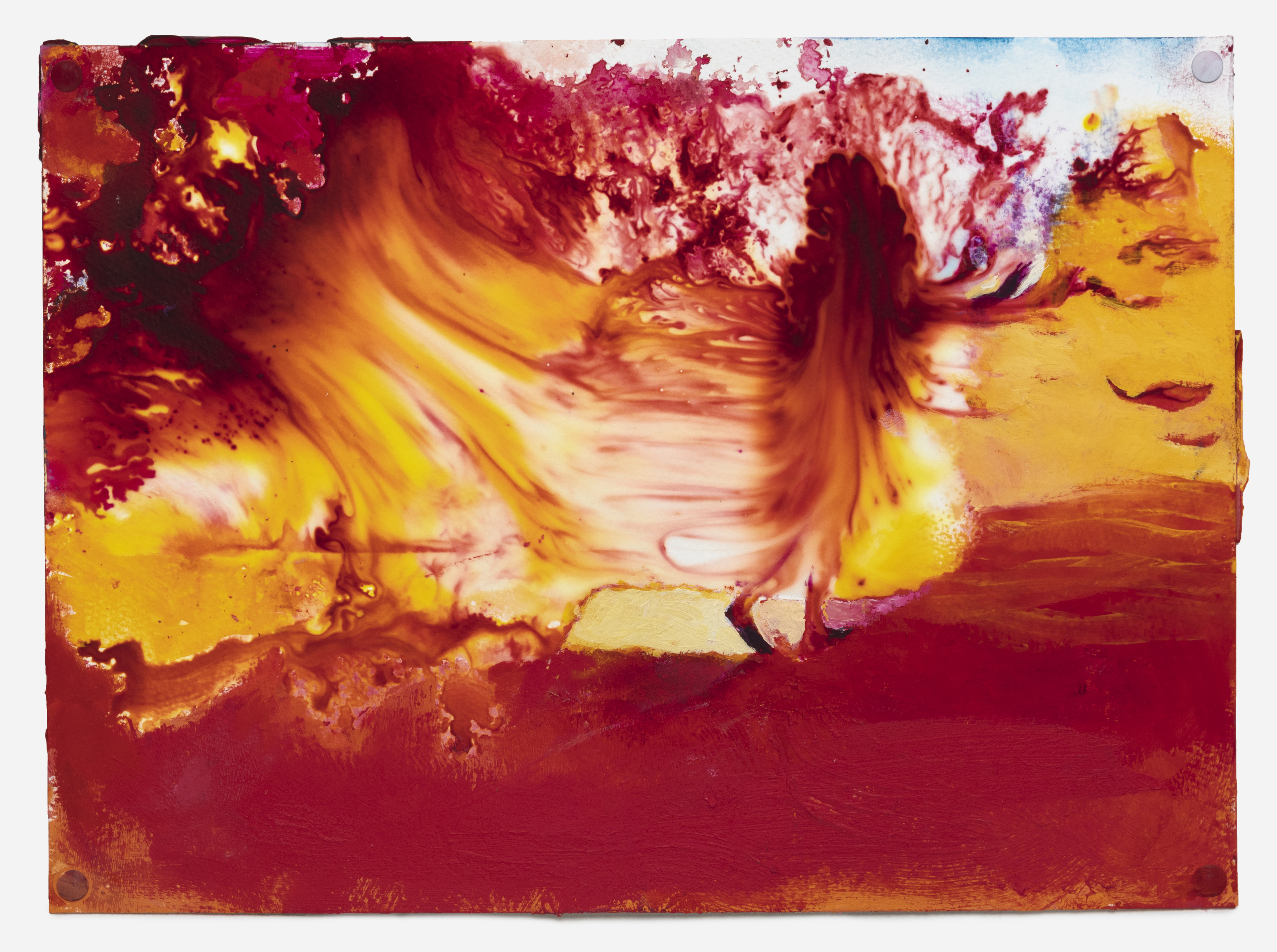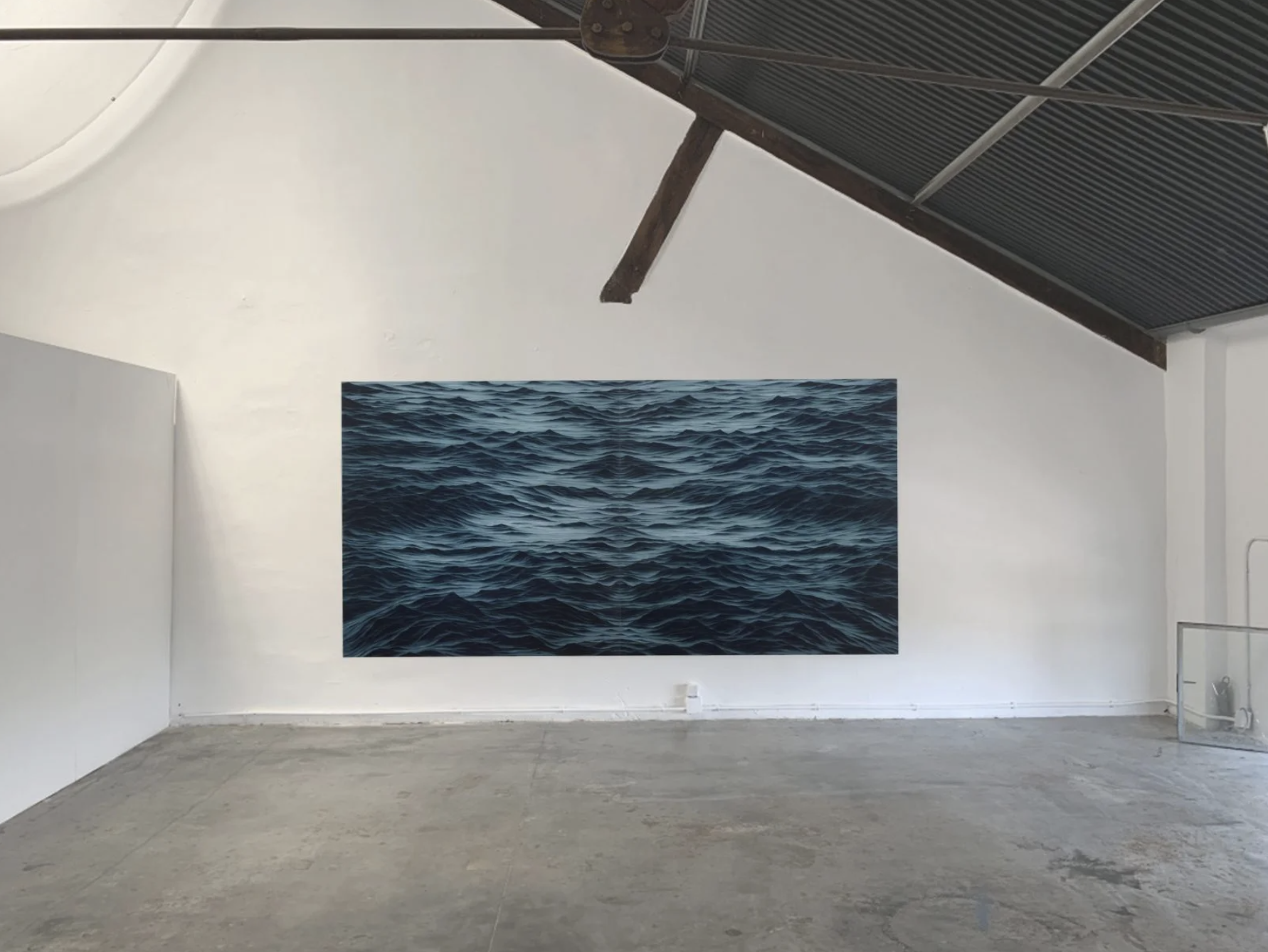There’s an Art to Giving: Here are our top tips
- By Mary Corrigall
-------------
People who don’t like chocolate (they exist), or whisky, frown on fashion and sport, have no patience to read books and have no hobbies are extremely hard to spoil during the silly season. One year, I treated such a type of person to a voucher for a series of pottery classes, thinking that I would give them an ‘experience’ and assign them a creative pastime. While I envisaged this person would thank me for years to come for assisting in channelling their creative spirit into vases, in reality, I suspect they did not make it past the first pottery class. The only remnant of the experience is a wobbly-looking pinch pot that now functions as an ashtray for the casual, undercover smokers in the family that linger at the bottom of the garden.
 Penny Siopis, Atlas II (detail), 2020, Glue, ink and oil on paper, One of 32 pieces: 27.5 x 37.5cm each, courtesy Stevenson Gallery
Penny Siopis, Atlas II (detail), 2020, Glue, ink and oil on paper, One of 32 pieces: 27.5 x 37.5cm each, courtesy Stevenson Gallery
Art is just the sort of gift to give this sort of person, and pretty much anyone else – at any time of the year. Even people who have shown little interest in art previously, are ideal – and perhaps the perfect - recipients for an artwork. Even those who know little about art and may even be disparaging of this seemingly hoity-toity pursuit, are aware that art is valuable and quite unlike any other commodity. This is probably down to the auction figures that make headlines, such as the recent sale of a 1932 painting by Picasso, titled 'Femme à la montre' ('Woman with a watch', at a Sotheby’s auction in New York which sold for over $139 million (over R2-billion). Or closer to home an Irma Stern, 'Children reading the Koran' (1939) fetching R22-million at a Strauss and Co sale in March this year.
 Pablo Picasso’s Femme à la montre (or Woman with a Watch) sold for a whopping $139.4 million at Sotheby’s in New York this month. Courtesy Sotheby's and Smithsonian.
Pablo Picasso’s Femme à la montre (or Woman with a Watch) sold for a whopping $139.4 million at Sotheby’s in New York this month. Courtesy Sotheby's and Smithsonian.
These kinds of headlines are useful, in the sense that they establish that art can increase in value over time, eventually commanding mind-boggling high figures, translating into a wide-held perception that art is worth acquiring. However, these sales make headlines because they are so remarkable and rare and are only a reflection of the art market at the very high end.
Nevertheless, many who buy art, or, if they are fortunate enough to be given an artwork, have the expectation or belief that there is a chance it is a good ‘investment.’ This was recently borne out in the Deloitte Art & Finance Report 2023, which established that 83% of younger collectors said that “investment returns” were a key motivation – up from 50% in 2021).
Investing in art is, however, a tricky business. The market for contemporary art is in constant flux, given fluctuating tastes in art and shifts in art making. Just think of all those people now lumbered with works by Richard Scott, which are selling for a song - certainly substantially less than they did when they were acquired a decade ago when some thought a pop-esque rendition of a woman in a skimpy bikini was the height of good taste.
As such, when choosing art for someone else (or yourself) it isn't always a good idea to buy art on the basis that the name is familiar or everyone in your social circle is gagging for one. Don’t be swayed by fashion. You need to assess the merits of each work, for ultimately the value of an artwork is determined by what it can fetch on the secondary market (at auctions). In this sphere, artworks, unlike in galleries or at art fairs, are valued according to their individual characteristics – as well as previous auction records and, naturally, if the artists’ works are selling out at art fairs and exhibitions before they hit the wall, the demand will be high enough to drum up a bidding war.
The individual characteristics you need to pay attention to would include; the composition – is it visually compelling – subject-matter – is it socially or artistically relevant – and is it representative of the artist’s practice. This might pertain to the palette – for example, if you are buying a work by Penny Siopis you would probably want it to be in shades of red or pink. Similarly, if you are acquiring a piece by Jake Aikman you want a seascape and if its work by Colbert Mashile you want it to feature some anthropomorphic creatures.
 Jake Aikman, Janus Atlantic, 2019, Courtesy Suburbia Contemporary
Jake Aikman, Janus Atlantic, 2019, Courtesy Suburbia Contemporary
What is the substance of the work – the back story to it – is it socially relevant, expressive of the artist’s life, situation, or in the case of abstract works – what is their process or approach to making art? This process of discovery is part of the joy of collecting art – that it requires research and perhaps even a conversation with the artist, where possible. Relaying all this information about an artwork when it is gifted to someone will evince that it is a considered gift and is bound to score major points.
A discerning collector with a small budget looking for an ‘investment’ work is more likely to do well by acquiring works that few people are paying attention to. This could relate to artists from the 90s, 80s, 70s or earlier who were part of a group of artists ploughing a particular aesthetic, subject-matter or medium but were overlooked.
Considering that overlooked female artists are being dug up and celebrated you might wish to cast your eye over works by some of the female artists, linked to particular groups or movements. Auctions are ideal platforms to scour for such works. Naturally, some research would need to be involved as well; finding out about the artists’s exhibition history, what is special about their work and what the ideal example might be, as you would most certainly wish to acquire a work that is immediately identifiable as a work by a particular artist.
Given you might not want to spend huge sums on an artwork for someone as a gift, unless they are your beloved, editioned works on paper will more than likely fit the bill. In this instance, you should adopt the opposite approach – editioned works by unknown artists are not a safe bet – unless they make it big sometime in the future. Tried and tested names (at auction) are the way forward. I can’t think of anyone who would not be delighted to receive an editioned work by Mongezi Ncaphayi, Bambo Sibiya or Norman Catherine. Those by Diane Victor, another well-known artist, are tempting as well, but will likely resonate with those who are not afraid of art that presents disturbing events.

Mongezi Ncaphayi, ...all this time II, 2023, R7,500.00 ex. VAT. Presented by Atelier Le Grand Village, CONTACT TO BUY
Editioned photographic works are worth considering, especially given a new generation of artists (the Michaelis Graduate show this year was dominated by photographic art) are embracing this medium and archival images.
As photography is a cornerstone of popular culture it is also more accessible for new art converts who you might be shopping for. Archival images by photojournalists documenting historical moments or capturing the spirit of a bygone era are timeless. Think of photos by Alf Khumalo, Bob Gosani, TJ Lemon or Graeme Williams. Images from the famous Drum magazine remain desirable and can be snapped up easily from their shop in Joburg at 44 Stanley.
Or turn your eye on a new generation of artists, building on the legacy of the late David Goldblatt and Santu Mofokeng in their focus on how architectural characteristics reveal social mores, or our relationship to the land or spirituality. Newcomers such as Tshepo Moloi, Simphiwe Julia Thabede and Sibusiso Gcaba come to mind. Gcaba’s moody depiction of an empty road in Kukude Phambili (Far Forward) would make the ideal gift for someone plotting a new path for themselves in 2024.
 Tshepiso Moropa, The Flying Girl, 2023, CONTACT TO BUY
Tshepiso Moropa, The Flying Girl, 2023, CONTACT TO BUY
As I have reported on this platform previously, collaged photographic works, are finding traction again and are therefore worth considering. Anne Lacheiner-Kuhn’s Queerly Cultured is a prime example of this aesthetic and the tongue-in-cheek ethos underpinning it. Motlhoki Nono’s Ka di Sontaga exemplifies this trend of reconstructing, and revisiting history via a personal archive.

Drawings and small works on paper are also a budget-friendly option. With regards to drawings, you should be guided by the quality of the marks and if drawing is the apt vehicle for the subject matter – has the artist exploited drawing? Keep an eye out for watercolour, gouache and acrylic works on paper – there seems to be a slew of portraits on the market in this medium by emerging artists. The expressiveness and novelty of the language should guide your choices.
If you can’t afford to give an artwork to someone, but you are keen to encourage them to appreciate or collect art or further their relationship with it, art books are an excellent option and they can be highly collectable and sellable. Make a stop at David Krut in Joburg, or Clarke’s in Cape Town. Stevenson and Goodman galleries sell a good range of monographs on the artists they represent. The Norval Foundation and Zeitz MOCAA also flog publications relating to their programming.
Happy shopping, and don’t forget to pick up something for yourself!
Mary Corrigall's Holiday Wishlist
Further Reading In Articles
African Artist Directory




















